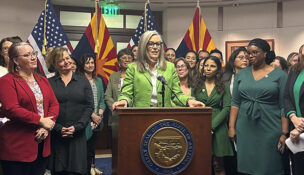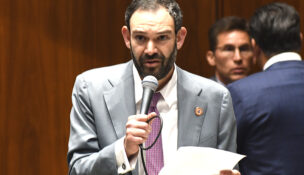Crate debate
Arizona Capitol Reports Staff//February 9, 2007//[read_meter]
Cheryl Naumann, president and CEO of the Arizona Humane Society The ballot measure passed but the arguments continue. Was Prop. 204, also known as the Humane Treatment for Farm Animals...
No tags for this post.

















